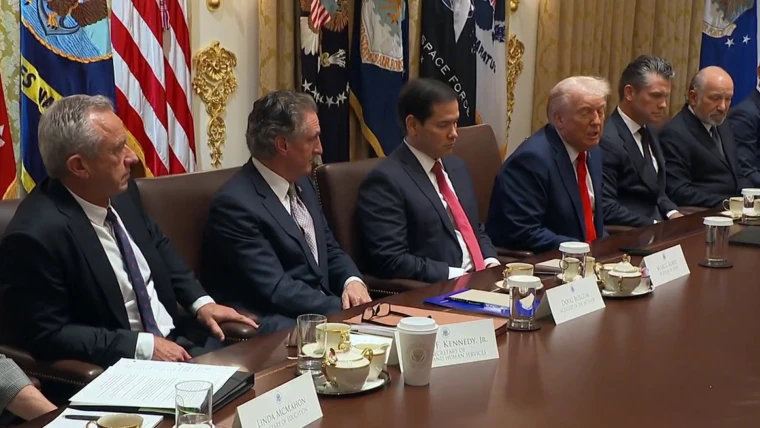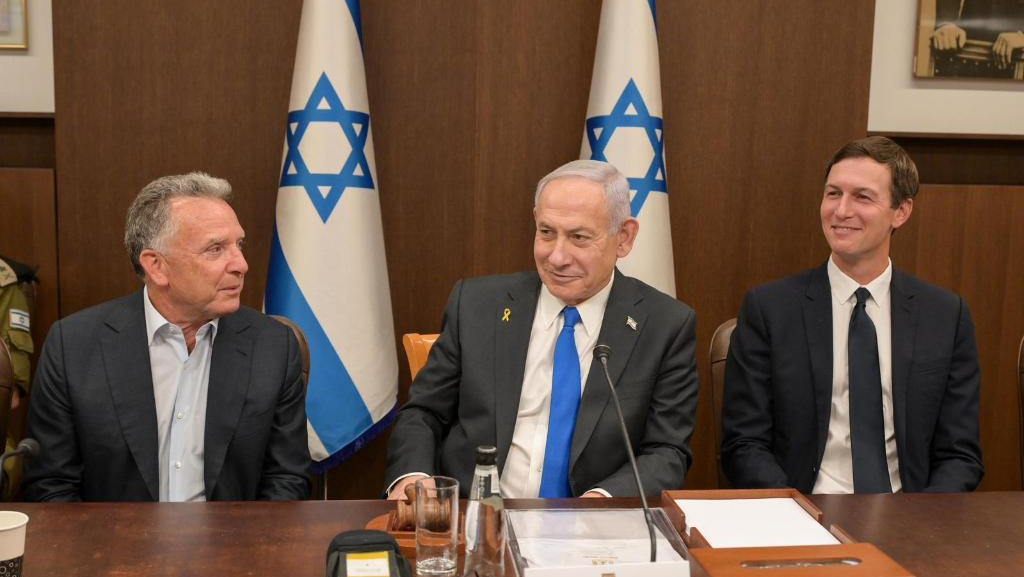Israeli Cabinet Approves Gaza Ceasefire Framework, bringing renewed hope for ending one of the longest standing conflicts in the region. This landmark decision has been hailed as a critical step toward peace, the release of hostages, and alleviating the humanitarian crisis in Gaza. After years of hostilities and devastating losses on both sides, this framework sets the stage for a potential turning point in the conflict between Israel and Hamas.
The framework was carefully crafted through months of negotiations and international mediation. Its approval by Israel’s cabinet reflects a collective desire to find a resolution to the violence that has plagued both Israelis and Palestinians for decades. The agreement outlines a phased approach to peace, prioritizing humanitarian aid, prisoner exchanges, military de-escalation, and discussions about Gaza’s governance.
The Gaza Conflict A Long History
The Israeli Palestinian conflict has deep historical roots, with tensions flaring periodically into violent confrontations. In recent years, Gaza has been a focal point of hostilities due to the presence of Hamas, the militant group governing the territory, and repeated rocket attacks into Israeli cities. These attacks often triggered severe military responses from Israel, leading to heavy civilian casualties and widespread destruction.

The latest wave of violence was precipitated by a series of coordinated attacks by Hamas, resulting in significant Israeli casualties and the abduction of many civilians. Israel’s military response was swift and intense, with airstrikes and ground operations aimed at dismantling Hamas’s military capabilities. Over the course of the conflict, tens of thousands of civilians in Gaza have lost their lives, and the region’s infrastructure has been heavily damaged, creating a dire humanitarian situation.
Amid this environment of violence, repeated attempts at informal ceasefires had failed. Both sides faced immense pressure domestically and internationally to reach an agreement that could prevent further escalation and suffering. The latest ceasefire framework represents a comprehensive attempt to address these complex issues and move toward lasting peace.

Key Components of the Ceasefire Framework
The Israeli Cabinet Approves Gaza Ceasefire Framework with specific goals and commitments from both parties. The framework is structured to ensure a gradual, step by step process that prioritizes humanitarian concerns while addressing security issues.
Hostage and Prisoner Exchange
One of the most urgent aspects of the agreement is the exchange of hostages and prisoners. Israel aims to secure the release of civilians and military personnel abducted by Hamas, while Hamas will gain the release of thousands of Palestinian prisoners, including individuals serving long term sentences. This exchange is designed to build trust between the two sides and demonstrate a commitment to the ceasefire.
Military De-escalation
Following the initial exchange, Israel plans to reduce its military presence in Gaza gradually. While maintaining security in areas adjacent to the territory, the phased withdrawal of forces is intended to reduce civilian casualties and minimize tensions. This careful approach ensures that both sides feel secure while avoiding sudden escalations that could derail the peace process.
Humanitarian Aid and Reconstruction
The ceasefire framework also emphasizes the delivery of humanitarian aid to Gaza. Years of conflict have left residents without access to essential services such as food, clean water, and healthcare. International aid organizations are expected to play a key role in delivering immediate relief, including medical assistance, food supplies, and shelter for displaced populations. Over time, reconstruction efforts will focus on rebuilding homes, schools, hospitals, and infrastructure critical for daily life.
Governance and Stability
Perhaps the most challenging aspect of the agreement is the discussion surrounding governance in Gaza. The ceasefire framework envisions a transition toward a more stable political structure, potentially involving the Palestinian Authority or an international stabilization force. The goal is to prevent the resurgence of militant activity and create a sustainable foundation for long term peace.
International Involvement
The Israeli Cabinet Approves Gaza Ceasefire Framework with extensive international support. Diplomats from multiple countries played a crucial role in mediating the agreement, ensuring that both sides had incentives to comply with the terms. The presence of international observers and peacekeepers will help monitor the ceasefire, oversee the prisoner exchange, and support humanitarian efforts.
Global leaders have welcomed this development as a positive step toward ending the cycle of violence in Gaza. They have emphasized the importance of continuing dialogue, providing aid, and holding both parties accountable to their commitments. This international involvement aims to ensure that the ceasefire framework is not just a temporary measure, but the beginning of a more lasting solution.

Reactions in Israel
The Israeli public and political landscape have responded with a mix of hope and caution. Many citizens view the ceasefire framework as a necessary step toward ending a painful chapter of their history, while others, particularly in the far right factions, express skepticism and concern about the security implications.
Prime Minister Benjamin Netanyahu has expressed strong support for the agreement, emphasizing the importance of ending hostilities and securing the release of hostages. His government argues that the framework provides a structured approach to peace that balances security and humanitarian considerations.
Opposition voices within Israel, however, have warned that Hamas may not fully honor the agreement and that further negotiations will be needed to prevent renewed violence. Despite these concerns, the cabinet’s approval represents a significant political consensus that peace in Gaza is achievable if all parties adhere to their commitments.
Palestinian Perspectives
The Palestinian response to the ceasefire framework has also been cautiously optimistic. For residents of Gaza, the agreement offers hope for immediate relief from the humanitarian crisis and the potential return of family members held hostage. Many see the phased plan as a path toward greater autonomy and improved living conditions.
At the same time, there are questions about the framework’s ability to address the broader issues facing Palestinians, including political representation, economic development, and long term security. Palestinian leaders have emphasized that the ceasefire must be accompanied by sustained international support and meaningful steps toward political solutions to ensure lasting peace.
Challenges Ahead
While the Israeli Cabinet Approves Gaza Ceasefire Framework is a historic development, significant challenges remain.
Hamas Compliance: The success of the framework depends on Hamas’s willingness to fully comply with its commitments, including disarmament and participation in prisoner exchanges. Any deviation could undermine the ceasefire and reignite conflict.
Security Concerns: Israel must balance the need to reduce its military presence with the imperative of protecting its citizens from further attacks. Ensuring security while easing restrictions will require careful planning and coordination.
Humanitarian Recovery: Rebuilding Gaza’s infrastructure and addressing the immediate needs of its residents will require extensive international aid and long term investment. Failure to deliver these resources could lead to frustration and instability.
Political Negotiations: Discussions about governance and political oversight in Gaza are likely to be complex and contentious. Reaching a consensus that satisfies all stakeholders will be critical for maintaining peace.
A Path Forward
The Israeli Cabinet Approves Gaza Ceasefire Framework with the aim of creating a more stable and secure environment for both Israelis and Palestinians. Its phased approach provides a roadmap for gradually addressing security, humanitarian, and political issues. By prioritizing the release of hostages, easing military tensions, and allowing humanitarian aid, the framework lays the groundwork for a potential long term solution.
Success will require the cooperation of multiple parties, including the Israeli government, Hamas, Palestinian authorities, and international mediators. It will also depend on sustained monitoring, clear communication, and accountability to ensure that commitments are honored.

Humanitarian Impact
The humanitarian implications of the ceasefire framework are particularly significant. Years of conflict have left Gaza with severely damaged infrastructure, limited access to healthcare, widespread displacement, and shortages of food and clean water. Immediate relief efforts are essential to prevent further suffering and to build trust between the parties.
The phased delivery of humanitarian aid will help address urgent needs, including medical care, food security, housing, and sanitation. Over time, reconstruction projects will focus on rebuilding schools, hospitals, roads, and utilities, which are critical to the daily lives of Gaza residents.
For many civilians, the ceasefire framework represents not just a pause in fighting but a chance to rebuild communities and restore a sense of normalcy after years of trauma.
Global Significance
The Israeli Cabinet Approves Gaza Ceasefire Framework also carries broader geopolitical implications. The Middle East has long been a region of strategic importance, and developments in Gaza influence regional stability, security partnerships, and international diplomacy.
A successful implementation of the ceasefire could serve as a model for conflict resolution in other parts of the region. It demonstrates the value of negotiation, phased implementation, and international cooperation in addressing complex disputes. Conversely, failure to uphold the agreement could exacerbate tensions and undermine confidence in diplomatic solutions.
Conclusion
The approval of the Gaza ceasefire framework by Israel’s cabinet marks a historic and hopeful moment. While challenges remain, the agreement offers a structured path toward peace, focusing on humanitarian relief, the release of hostages, and gradual political and military adjustments.
The coming weeks and months will be crucial in determining whether this ceasefire can lead to lasting peace or if further negotiations will be necessary. For now, it provides a rare opportunity for dialogue, relief, and the possibility of a future where both Israelis and Palestinians can live with greater security and dignity.
By taking this step, Israel, Hamas, and the international community have signaled their commitment to exploring peace, even in one of the most complex and enduring conflicts of modern history. For the people of Gaza and Israel alike, the ceasefire framework offers a glimmer of hope and a chance to begin healing the wounds of years of conflict.
Do follow UAE Stories on Instagram
Read Next – UAE World Cup 2026: Fans Embark on Epic Road Trip














